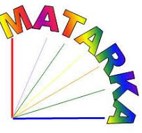A borókarágást befolyásoló tényezők és hatásuk a Kiskunsági Nemzeti Park borókásaira
Absztrakt
Kiskunsági Nemzeti Park (KNP) borókásaiban a növényzet és a növényevők kapcsolatrendszere több alapvető eltérést tartalmaz, más-más a nagytestű növényevők denzitása, illetve az ott táplálkozó fajok táplálék-összetétele. A szegényes táplálékkínálatban mérgező növények is szerepelnek, amelyek éppen a rágás miatt választhatnak ki emésztésgátló illóolajokat. A borókabokrokat Bugacon az üreginyulak, Orgoványban a birkák rágják, míg Bócsán egyáltalán nem rágottak e cserjék. Mi azt vizsgáltuk, hogy a borókák az illóolaj mennyiségével vagy minőségi összetételével védekeznek-e a rágás ellen. Eredményeink szerint a rágottság fordítottan arányos az illóolajtartalommal, a bokrok illóolaj-tartalma évszakosán változik, továbbá az illóolaj-tartalom nyáron a legalacsonyabb és a legmagasabb télen. Korábbi vizsgálataink szerint a magas illóolaj-tartalmú növényeket elkerülik az állatok, míg a kevésbé mérgező egyedek fogyasztását egymástól tanulják, ami szelektív borókapusztuláshoz vezethet. A borókák és a növényevők közötti evolúciós versenyfutás vezethetett oda a KNP több évtizedes történetében, hogy a különböző területek borókaállományai légifotóról is jól látható módon különböznek, annyira eltérő az egyes helyszíneken a méret- illetve korcsoport-eloszlás.
Hivatkozások
Altbäcker, V. (1998): Növény-növényevő kapcsolatok vizsgálata homoki társulásokban. - In: Fekete G. (szerk,). A közösségi ökológia frontvonalai. - Sciencia, Budapest, pp. 123-145.
Altbäcker, V., Hudson, R. & Bilkó Á. (1995): Rabbit-mothers' Diet Influences Pups' Later Food Choice. - Ethology, 99: 107-116.
Bernáth, J. (2000): Speciális növényi anyagok (hatóanyagok) funkciói a növényvilágban. - In: Bernáth J. (szerk.): Gyógy- és aromanövények. - Mezőgazda Kiadó, Budapest, pp. 31- 34.
Bilkó, A., Altbäcker, V. & Hudson, R. (1994): Food preference transmission in the rabbit: the means of information transfer. - Physiology’ and Behavior 56: 907-912.
Bryant, J. P. (1981): Hare Trigger. - Natural History 11: 46-52.
Bryant, J. P., Chapin, F. S. & Klein, D. R. (1983): Carbon/nutrient balance of boreal plants in relation to vertebrate herbivory. - Oikos 40: 79-100.
Clark, W. R. (1981): Role of black-tailed jackrabbits in a North American shrub-steppe ecosystem. - In: Myers, K. & Mclnnes, C. D. (eds.): Proceedings of World Lagomorph Conference, Guelph, Ontario, 1979, pp. 706-719.
Coley, P. D., Bryant, J. P. & Chapin, F. S. (1985): Resource availability and plant antiherbivore defense. - Science 230: 895-899.
Cometto-Muniz, J. E., Cain, W. S., Abraham, M. H. & Kumarsingh, R. (1998): Trigeminal and Olfactory Chemosensory Impact of Selected Terpenes. - Pharmacology Biochemistry and Behavior 60: 765-770.
Dearing, M. D. & Mangione, A. M. (2000): Diet breadth of mammalian herbivores: nutrient versus detoxification constraints. - Oecologia 123: 397-405.
Delibes, M. & Hiraldo, F. (1981): The rabbit as prey in the Iberian mediterranean ecosystem. - In: Myers, K. & Mclnnes, C. D. (eds.): Proceedings of World Lagomorph Conference, Guelph, Ontario, 1979, pp. 614-622.
Futuyma, D. J. (1976): Food plant specialization and environmental predictability in Lepidoptera. - American Naturalist 110: 285-292.
Freeland, W. J. & Janzen, D. H. (1974): Strategies in herbivory by mammals: the role of plant secondary compounds. - American Naturalist 108: 269-289.
Haukioja, E. (1985): Induced long-term resistance of birch foliage against defoliators: Defensive or incidental? - Ecology 66: 1304-1308.
Hassanali, N. B., Darab, Y., Sajed, M. A. & Fatemeh, N. (2004): Effects of spacing and harvesting time on herbage yield and quality/quantity of oil in thyme, Thymus vulgaris L. - Industrial Crops and Products 19: 231-236.
Hawkins, B. A. & Cornell, H. V. (2001): A compass for biological control. - Trends in Ecology and Evolution 15: 37.
Jermy, T. (1976): Insect-host plant relationship: coevolution or sequental evolution? - Symposia Biologien Hungarica 16: 109-113.
Jermy, T. (1983): Evolution of insect/host relationship. - American Naturalist 124: 609-630.
Kareiva, P. (1999): Coevolution ary arms races: Is victory possible? - Proceedings o f the National Academy of Sciences USA 96: 8-10.
Katona, K. & Altbäcker, V. (2002): Diet estimation by faeces analysis: sampling optimisation for the European hare. - Folia Zoologica 51: 11-15.
Katona, K., Bíró, Zs., Hahn, I., Kertész, M. & Altbäcker, V. (2004): Abundance of European hares in a lowland area, Hungary: a long term ecological study in the period of the rabbit extinction. - Folia Zoologica 53: 255-268.
Kertész, M., Szabó, J. & Altbäcker, V. (1993): The Bugac Rabbit Project. Part I: Description of the study site and vegetation map. - Abstracto Botanica 17: 187-196.
Kéry, A & Zámbó, I. (2000): A hatóanyag fogalma. - In: Bemáth J. (szerk.): Gyógy- és aromanövények. - Mezőgazda Kiadó, Budapest, pp. 29-31.
Lozano, G. A. (1998): Parasitic stress and self-medication in wild animals. - Advances in the Study o f Behaviour 27: 291-317.
Mátrai, K., Altbäcker, V. & Hahn, I. (1997): Seasonal diet of rabbits and their effect on juniper in Bugac Juniper Forest (Hungary). - Acta Theriologica 43: 107-112.
Provenza, F. D., Burritt, E. A., Clausen, T. P., Bryant, J. P., Reichardt, P. B. & Distel, R. A. (1990): Conditioned flavor aversion: A mechanism for goats to avoid condensed tannins in blackbrush. - The American Naturalist 136: 810-828.
Rhoades, D. F. & Cates, R. G. (1976): Toward a general theory of plant antiherbivore chemistry. - Recent Advances in Phytochemistry 19: 168-213.
Schwartz, C. C., Nagy, J. G. & Regelin, W. L. (1980a): Juniper Oil Yield, Terpenoid Concentration and Antimicrobial Effects on Deer. - Journal of Wildlife Management 44: 107-113.
Schwartz, C. C., Regelin, W. L. & Nagy, J. N. (1980b): Deer preference for Juniper forage and volatile oil treated foods. - Journal of Wildlife Management 44: 114-120.
Smith, R. L. (1990): E co lo g y and F ie ld Biology, Fourth Edition - HarperCollins, New York, pp. 509-512.
Vourc’h, G., Martin, J. L., Duncan, P., Escarré, J., & Clausen, T. P. (2001): Defensive adaptations of Thuja p licata to ungulate browsing: a comparative study between mainland and island populations. - Oecologia 126: 84-93.
Zavarin, E., Lawrence, L. & Thomas, M. (1971): Compositional variations of leaf monoterpenes in Cupressus monocarpa, C. pygmea, C. goveniana, C. abramisiana and C. sargentii. - Phytochemistry 10: 379-393.
VII. Magyar Gyógyszerkönyv (1992): (Ph. Hg. VII.) Medicina Kiadó, Budapest, pp. 395-398.






